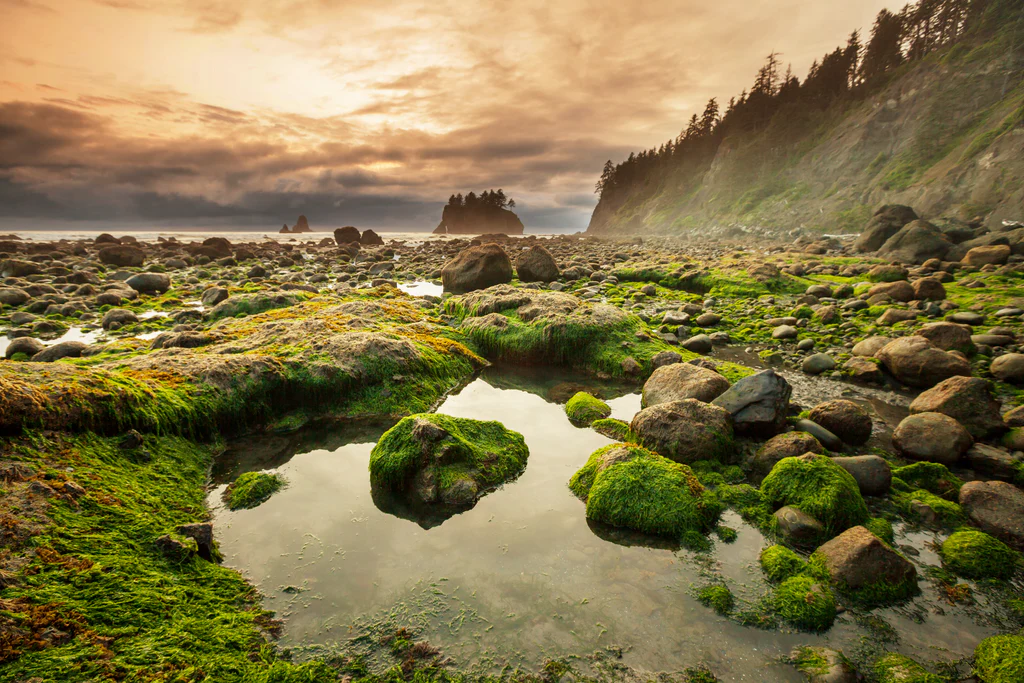Gotta be honest, I really thought I knew America’s must-sees.
Then I dug into UNESCO’s list and nearly tripped over the surprises.
Over 25 World Heritage sites in the U.S.? Who knew.
Some are icons. Some are quietly epic. I picked 12 that stopped me in my tracks.
Short drives. Long hikes. Tiny towns. Monumental views. If you only visit a few, make these the ones to visit.
Ready? Let’s go.
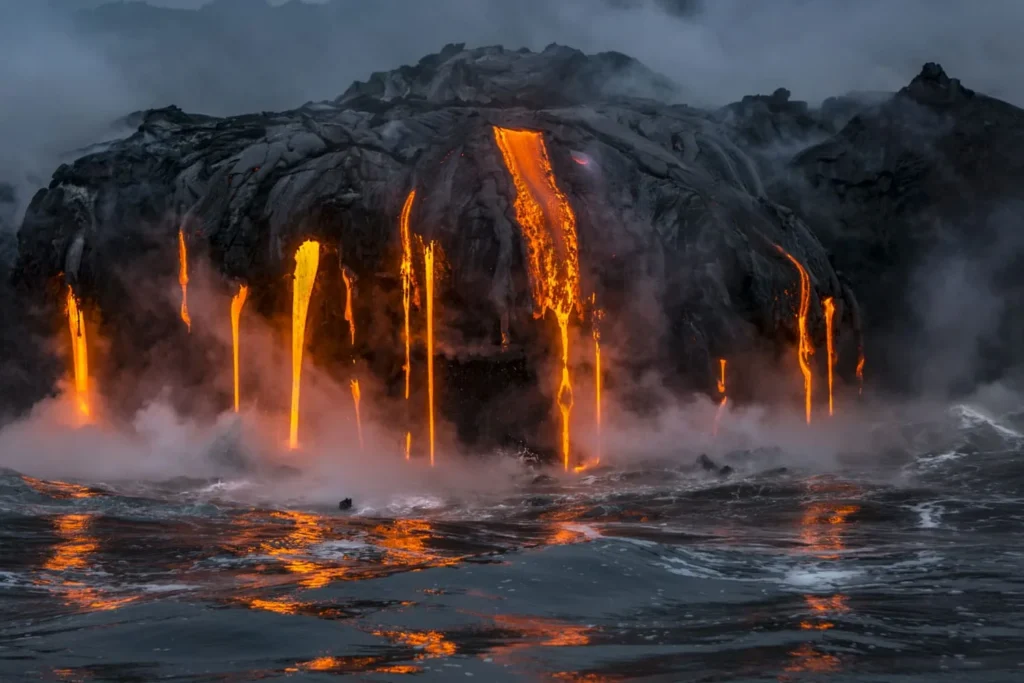
Contents
- 1 PART 1: NATURAL WONDERS OF UNIVERSAL VALUE
- 2 PART 2: CULTURAL LANDMARKS OF GLOBAL IMPORTANCE
- 2.1 6. Statue of Liberty: The World’s Welcome
- 2.2 7. Independence Hall: The Birthplace of a Nation
- 2.3 8. Mesa Verde National Park: Cities in the Cliffs
- 2.4 9. Chaco Culture National Historical Park: A Ceremonial Cosmos
- 2.5 10. Taos Pueblo: A Living Heritage
- 2.6 11. San Antonio Missions: The Colonial Frontier
- 2.7 12. The 20th-Century Architecture of Frank Lloyd Wright: Organic Design
- 3 Where Does Your World Heritage Journey Begin?
PART 1: NATURAL WONDERS OF UNIVERSAL VALUE
1. Yellowstone National Park: The Planet’s Pulse
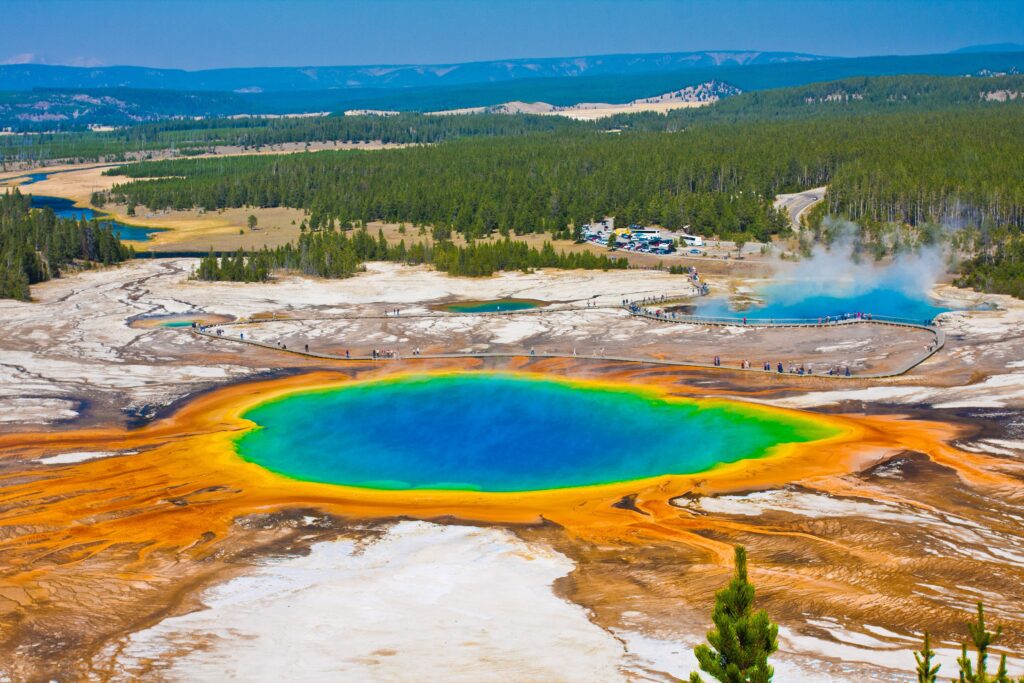
Yellowstone is more than just America’s first national park. It contains half of the world’s known geothermal features. That includes over 300 geysers, like the iconic Old Faithful.
The Grand Canyon of the Yellowstone River cuts a dramatic path. And numerous waterfalls thunder through the landscape.
It is also a premier site for studying Earth’s history. It holds the world’s largest recognized volcanic caldera.
Most importantly, it is one of the last intact large ecosystems in the northern temperate zone. It protects vital populations of grizzly bears, wolves, and bison.
The creation of Yellowstone in 1872 sparked a worldwide movement to preserve natural treasures. This makes it one of the most important UNESCO World Heritage Sites on the planet.
I’ll never forget watching Old Faithful erupt against a crisp Wyoming sky. It’s more than a predictable show. It’s a humbling connection to the deep, geologic time that shaped our world.
First-Timer’s Guide & Tips:
- Navigate the Loop: The park’s main sights are connected by the Grand Loop Road. It is shaped like a figure-eight. Plan for long drives between areas like Old Faithful and Lamar Valley.
- Avoid the Crowds: Visit in the shoulder seasons of April-May or September-October. You’ll find fewer people and more active wildlife. For summer visits, arrive at popular spots before 9 a.m..
- Stay Wildlife Aware: This is not a zoo. The National Park Service requires you to stay 100 yards from bears and wolves. Stay 25 yards from all other animals. Rent or buy bear spray when you arrive.
2. Grand Canyon National Park: A Library of Geologic Time
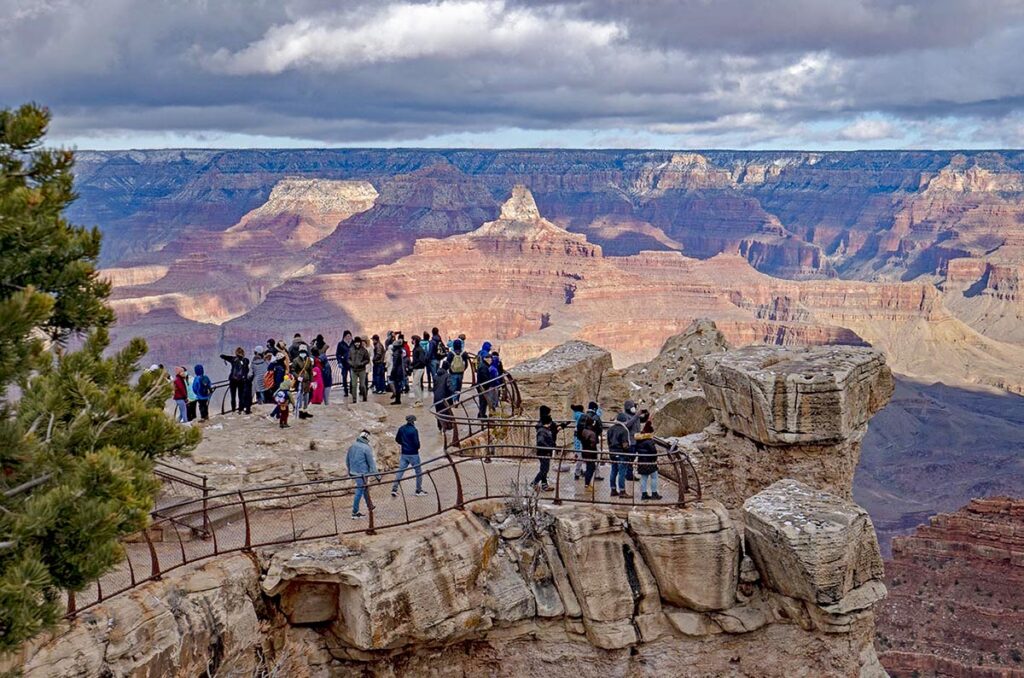
The Grand Canyon is the world’s most spectacular gorge, a 2-billion-year-old story of Earth’s history, laid bare for all to see.
Its sheer scale, light, and color defy easy description. You’ll find temple-like buttes and vast, multihued topography.
The exposed geologic record is unparalleled on Earth. It spans all four eras of our planet’s history.
Descending from the rim to the river is like traveling from Canada to Mexico. You pass through five of North America’s seven life zones.
The shuttle systems and visitor advice are part of a strategy to protect this treasure from being loved to death. Following the park’s guidance makes you a partner in its conservation.
My first visit to Mather Point at sunrise was unforgettable. A profound silence accompanied the visual spectacle. I felt my own smallness in the face of such deep time.
First-Timer’s Guide & Tips:
- Find the Best Views: Mather Point is stunning. But for fewer crowds, try Lipan Point or Desert View for sunrise and sunset photos.
- Use the Shuttle: The free South Rim shuttle buses are essential. They are the only way to access the scenic Hermit Road for most of the year.
- Take an Easy Hike: Walk a part of the Rim Trail. The paved “Trail of Time” between the Yavapai Geology Museum and Verkamp’s Visitor Center is excellent. It offers an accessible and educational walk.
3. Everglades National Park: A Fragile River of Grass
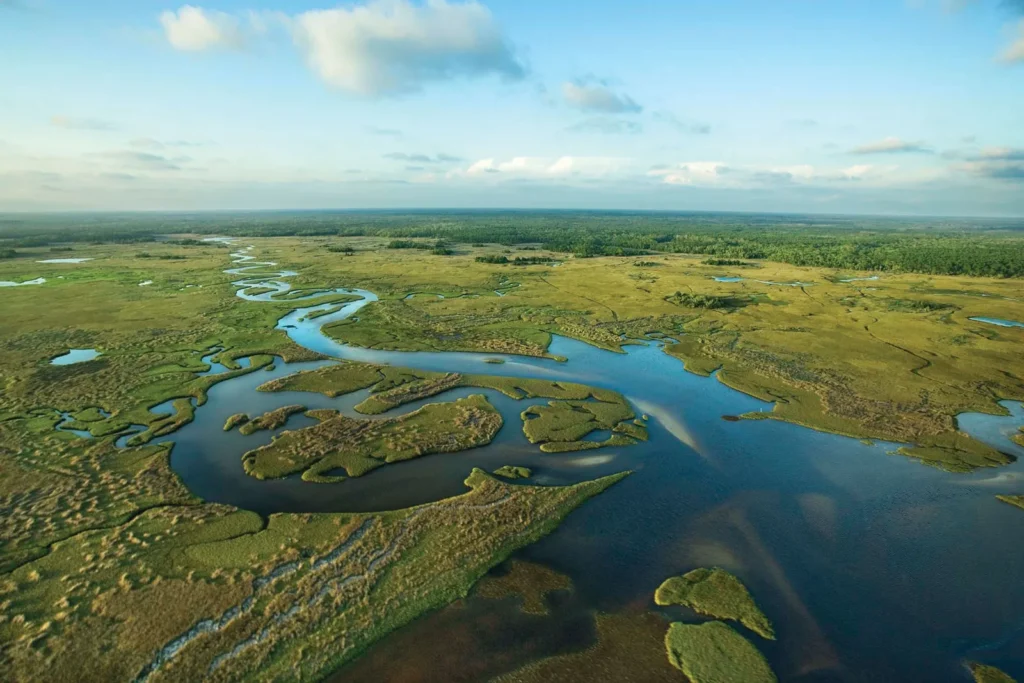
The Everglades is a slow-moving, 60-mile-wide “River of Grass.” This is the largest tropical wilderness in the U.S. The park is dedicated to preserving a complex, living biological mechanism.
It has the largest mangrove ecosystem in the Western Hemisphere. It also has the largest continuous stand of sawgrass prairie.
The park is a crucial sanctuary for many rare and endangered species. This includes the Florida panther, American crocodile, and West Indian manatee.
Taking an airboat tour is a classic Everglades experience. I remember the thrill of skimming across the sawgrass.
Then came the quiet, tense moments of spotting an alligator. It lurked just beneath the water’s surface.
First-Timer’s Guide & Tips:
- Know the Entrances: The park has three main entrances. They are in Homestead, Miami (Shark Valley), and Everglades City. They are hours apart and do not connect through the park.
- Must-Do Activities: The Anhinga Trail from the Homestead entrance guarantees wildlife sightings. The Shark Valley Tram Tour offers a great overview of the ecosystem.
- Be Prepared: Visit during the dry season (November-March). This means better weather and more concentrated wildlife. Bug repellent, sunscreen, and plenty of water are non-negotiable.
4. Olympic National Park: A Trio of Ecosystems
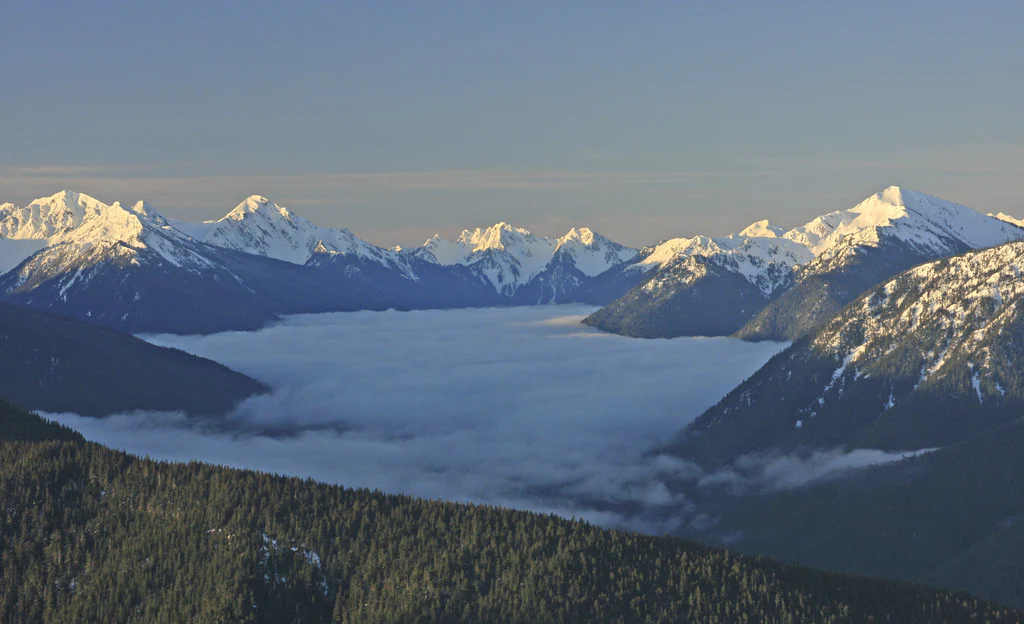
Olympic is like three parks in one. It features glacier-capped mountains and a rugged Pacific coastline. It also has some of the world’s finest temperate rainforests.
The park’s value comes from this remarkable juxtaposition of ecosystems. You can see glacial action, coastal erosion, and temperate rainforest biology. All of this exists in a relatively compact area.
Walking through the Hoh Rainforest is a magical experience. Giant, moss-draped maples and towering Sitka spruce create a surreal atmosphere.
First-Timer’s Guide & Tips:
- Where to Go: Visit Hurricane Ridge for mountain views. Head to Rialto or Ruby Beach for the dramatic coastline. Explore the Hoh Rainforest for the iconic trees.
- Pack for All Weather: The weather changes dramatically between ecosystems. Pack layers and high-quality rain gear, no matter the season.
- Plan Your Drives: No roads cross the park’s interior. Travel between sections can require long drives. Plan your itinerary by region.
5. Redwood National and State Parks: Walking Among Giants
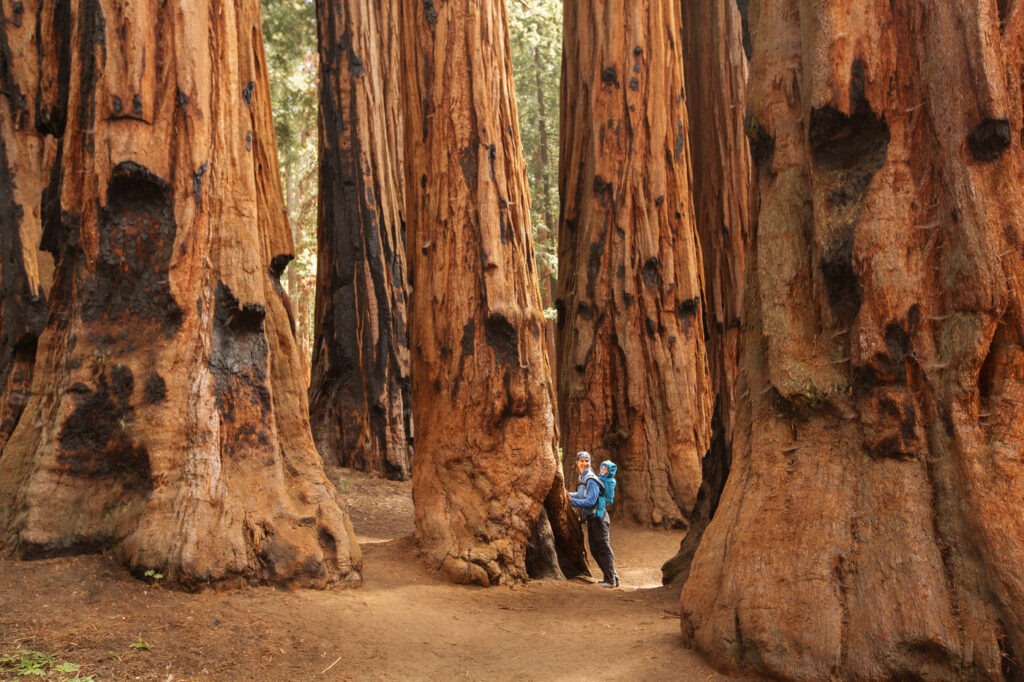
Standing in a forest of the world’s tallest living things is profoundly awe-inspiring.
These parks protect the last remnants of a primeval forest. This ecosystem has existed for 160 million years.
They also represent the most significant remaining example of a coastal redwood forest.
I remember craning my neck to see the top of a giant. I realized it was a living being long before my country was founded. This connects you to a natural history that transcends human time.
First-Timer’s Guide & Tips:
- Take the Scenic Route: The Newton B. Drury Scenic Parkway is a must-do. It offers a 10-mile immersive drive through an old-growth forest.
- Enjoy an Easy Hike: The Lady Bird Johnson Grove Trail is perfect for first-timers. It’s an accessible and beautiful walk among the giants.
- Stay Connected (Offline): Cell service is notoriously spotty. Download offline maps before you go. Also, pack rain gear, as it is a temperate rainforest.
You May Also Like: You Haven’t Experienced The TRUE America Until You Visit These 11 U.S. National Parks
PART 2: CULTURAL LANDMARKS OF GLOBAL IMPORTANCE
6. Statue of Liberty: The World’s Welcome

The Statue of Liberty is a powerful symbol of freedom, democracy, and immigration. It has welcomed millions to America. It is one of the most recognizable and moving American landmarks.
Its universal value is twofold. It is a masterpiece of the human spirit and a 19th-century technological wonder. It represents a bridge between art and engineering.
It is also an enduring symbol of liberty. It is directly associated with the mass migration of people to the United States.
Seeing the statue from the approaching ferry is a powerful moment. It grows larger and larger on the horizon. You can feel the palpable sense of history and hope it evokes.
First-Timer’s Guide & Tips:
- Book Way in Advance: Tickets for Crown Access must be booked months ahead. Use the official vendor, Statue City Cruises. Avoid street-side ticket scams.
- Go Early: Take the very first ferry of the day. This helps you beat the immense crowds that build throughout the day.
- Pack Light: Security is like an airport. There are strict restrictions on bags for pedestal and crown access. You will need to use lockers.
7. Independence Hall: The Birthplace of a Nation
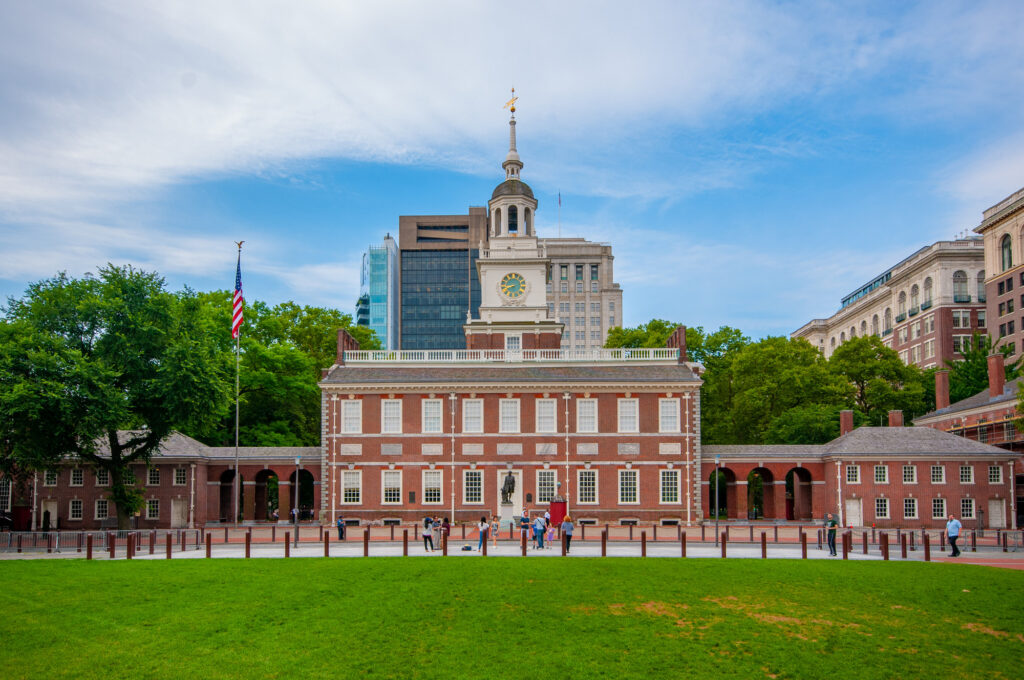
Step into the very room where America was born. The Declaration of Independence and the U.S. Constitution were debated and signed here. It is the cradle of American democracy.
The universal principles of freedom and democracy set forth here have had a profound global impact. They became models for other nations’ charters. They heralded the modern era of government.
Standing in the Assembly Room is a profound experience. I looked at George Washington’s “Rising Sun” chair. I imagined the weight of the decisions made there. Those ideas continue to shape global political discourse today.
First-Timer’s Guide & Tips:
- Get Your Tickets: Timed entry tickets are required from March through December. Reserve them online in advance for a $1 handling fee.
- What to See: The tour focuses on the first floor’s Assembly Room. Also, visit the adjacent Great Essentials Exhibit. You can see original printed copies of the founding documents there.
- Arrive Early: You must clear a security screening. Arrive at least 30 minutes before your ticketed time.
8. Mesa Verde National Park: Cities in the Cliffs
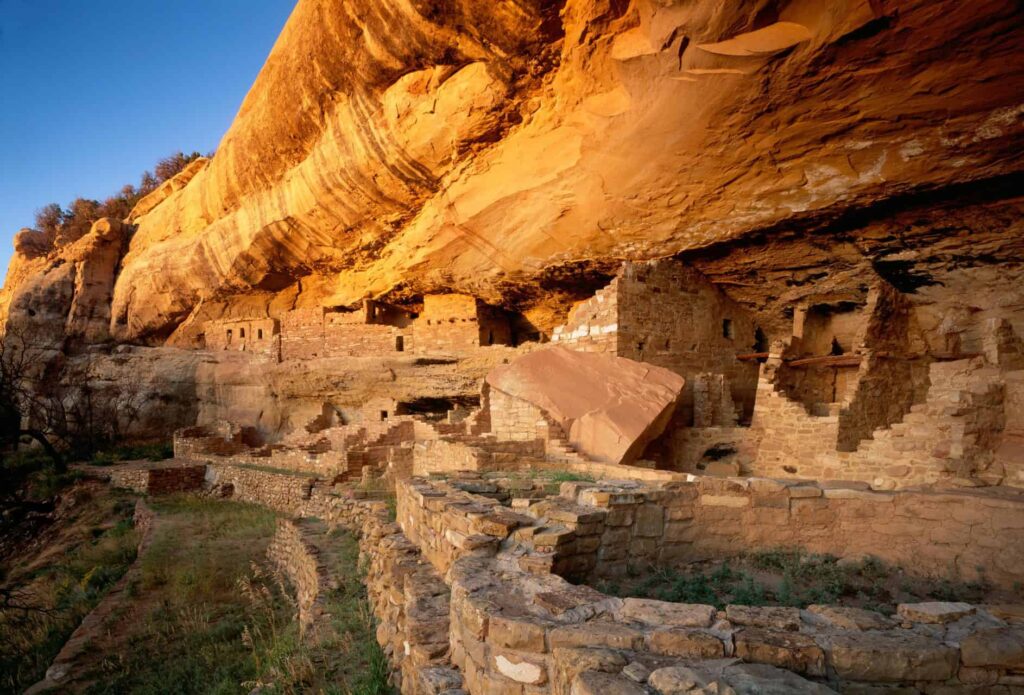
Picture spectacular cliff dwellings. These are multi-story cities built directly into canyon alcoves. The Ancestral Pueblo people built them over 700 years ago!
The park’s exceptional archaeological sites provide eloquent testimony to ancient cultural traditions. They represent a graphic link between the past and present ways of life of the Puebloan Peoples.
The Balcony House tour is a true adventure. I climbed a 32-foot ladder and crawled through a narrow tunnel. It gave me an incredible appreciation for the people who lived there.
First-Timer’s Guide & Tips:
- Tours are Mandatory: The only way to enter the major cliff dwellings is via a ranger-guided tour. Book tickets online 14 days in advance. They sell out very quickly.
- Drive the Mesa Top: Drive the 6-mile Mesa Top Loop. It offers stunning overlooks of numerous dwellings from a distance.
- Mind the Altitude: The park is at a high elevation (7,000-8,500 feet). Bring plenty of water, sunscreen, and snacks. Services inside the park are limited.
9. Chaco Culture National Historical Park: A Ceremonial Cosmos
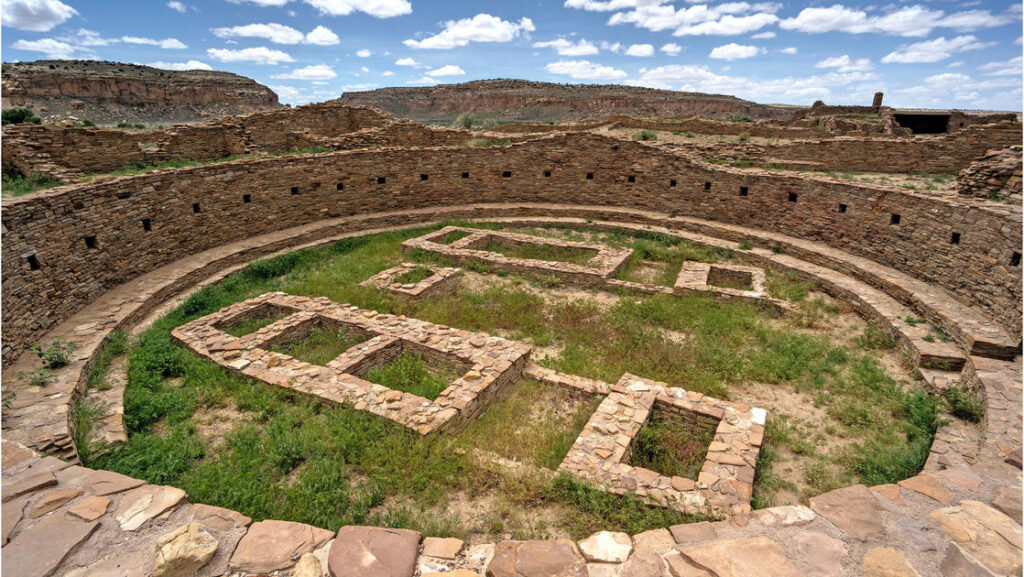
Chaco was a massive, highly organized center for the Ancestral Puebloans. It was a hub for ceremony, politics, and trade.
Its monumental “great houses” and sophisticated astronomical alignments are unique. This is one of our most important pre-Columbian UNESCO World Heritage Sites.
The sites illustrate the remarkable achievements of the Chacoan people. They overcame a harsh environment to create a dominant culture. This testifies to a complex social structure unique in the American Southwest.
The profound mystery of Chaco stays with you. The wide, straight roads seem to lead nowhere. The massive buildings exist in a resource-scarce environment.
You feel like you are in a place of immense spiritual and cosmic significance.
First-Timer’s Guide & Tips:
- Getting There is an Adventure: GPS is unreliable. The final miles into the park are on rough, unpaved roads. A high-clearance vehicle is strongly recommended. Roads can become impassable when wet.
- Must-See Sites: Take the self-guided tour of Pueblo Bonito. Hike the Pueblo Alto Trail for breathtaking aerial views.
- Look to the Stars: Chaco is an International Dark Sky Park. Attend a ranger-led night sky program if possible. Astronomy was central to the Chacoan world.
10. Taos Pueblo: A Living Heritage
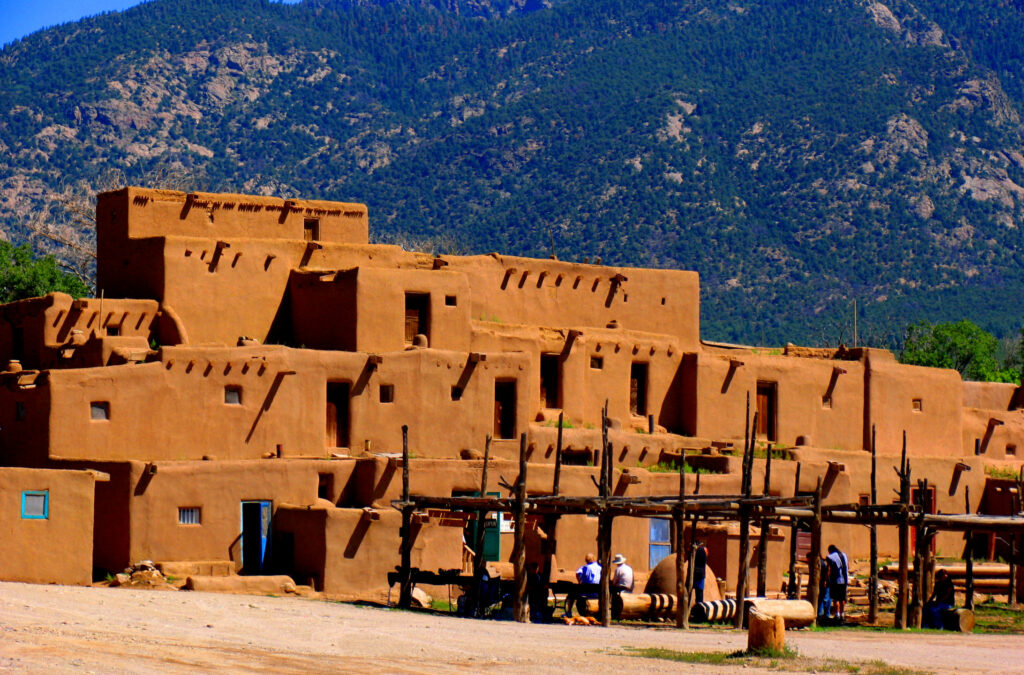
Taos Pueblo is not a historical relic. It has been continuously inhabited for over 1,000 years. A visit offers a rare chance to witness a living link to an ancient culture.
The visitor’s role here shifts from tourist to guest. Your primary responsibility is to ensure your presence does not disrupt or disrespect the very culture you have come to witness.
I remember the smell of woodsmoke from the hornos (adobe ovens). The iconic multi-storied adobe structures stand against the Sangre de Cristo Mountains. There is a deep sense of history and continuity here.
First-Timer’s Guide & Tips:
- Respect is Key: This is a private home and a sovereign nation. Respect residents’ privacy. Always ask permission before taking photos of people. Adhere strictly to all posted rules.
- Check for Closures: The Pueblo closes for community events with little notice. You must call ahead or check the official website before visiting.
- Support Local Artisans: Support the community by buying bread baked in the hornos. Purchase traditional arts and crafts directly from the artists.
11. San Antonio Missions: The Colonial Frontier
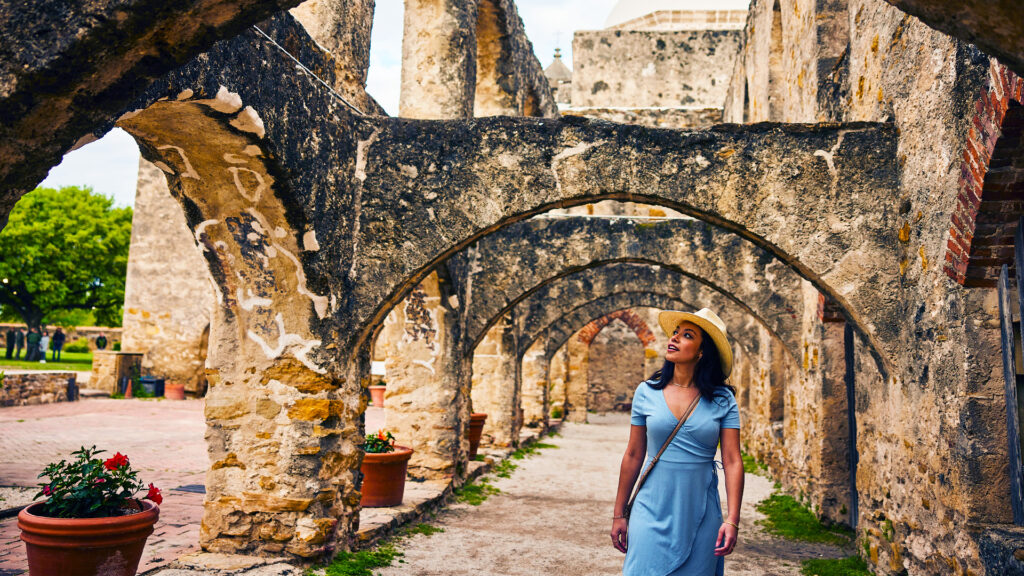
The five missions, including the famous Alamo, are an intact example of Spain’s colonial frontier.
They were not just churches. They were fortified, self-sufficient communities. They were centers of life, agriculture, and cultural exchange.
The missions are an exceptional example of interweaving cultures. Spanish and Coahuiltecan traditions are visible in the architecture and art.
I was struck by the tranquility of Mission San José. It is known as the “Queen of the Missions.” Its intricate Rose Window and vast grounds transport you back to the 18th century.
First-Timer’s Guide & Tips:
- How to Visit: The Mission Reach Hike & Bike Trail is the best way to connect the four southern missions. The VIVA Mission bus route is another great option.
- Start at San José: Visit the main visitor center at Mission San José first. The park film provides excellent historical context for all the sites.
- Respect Active Parishes: Four of the missions are still active Catholic parishes. Be respectful of any services or events that may be taking place.
12. The 20th-Century Architecture of Frank Lloyd Wright: Organic Design
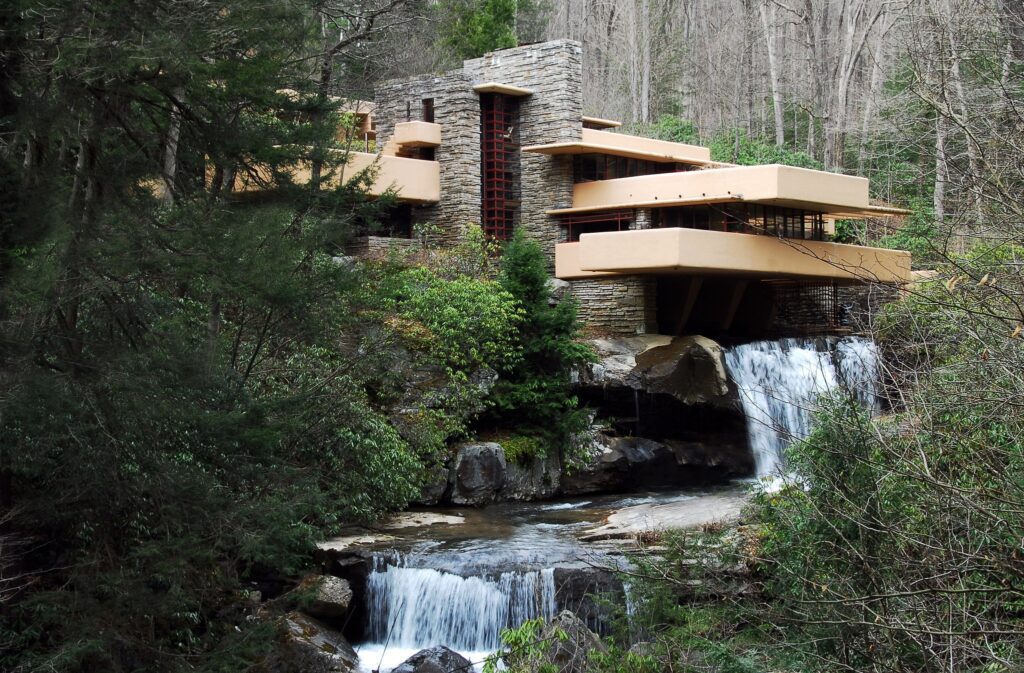
Frank Lloyd Wright’s “organic architecture” was revolutionary. He designed structures in harmony with humanity and their environment. This site includes eight of his masterpieces across the country.
His work had a profound and lasting influence on 20th-century architecture. He pioneered innovations like the open plan. He used new materials like steel and concrete to blur the lines between exterior and interior.
I focused my visit on Fallingwater in Pennsylvania. It is the ultimate expression of his philosophy. The house is built not just near a waterfall, but as part of it.
Inside, you can hear the constant, gentle sound of the water. You truly understand what Wright meant when he said he wanted the owners to “live with the waterfall”.
First-Timer’s Guide & Tips:
- Reservations are Essential: Book tickets for Fallingwater tours weeks or months in advance online. This is especially true for peak seasons.
- Tour Logistics: Be prepared for considerable walking and numerous stairs. Wear comfortable, non-slip shoes. Note the strict restrictions on bags and interior photography.
- Explore the Area: Visit nearby Ohiopyle State Park. It helps you appreciate the beautiful landscape that inspired Wright’s masterpiece.
Where Does Your World Heritage Journey Begin?
This journey has taken us across the country.
We’ve seen the volcanic heart of Yellowstone. We’ve stood in the birthplace of democracy at Independence Hall. We’ve marveled at the genius of Frank Lloyd Wright.
These 12 UNESCO World Heritage Sites showcase an incredible diversity.
So for your next great adventure, look within America’s borders. These globally significant American landmarks are waiting for you to explore.
